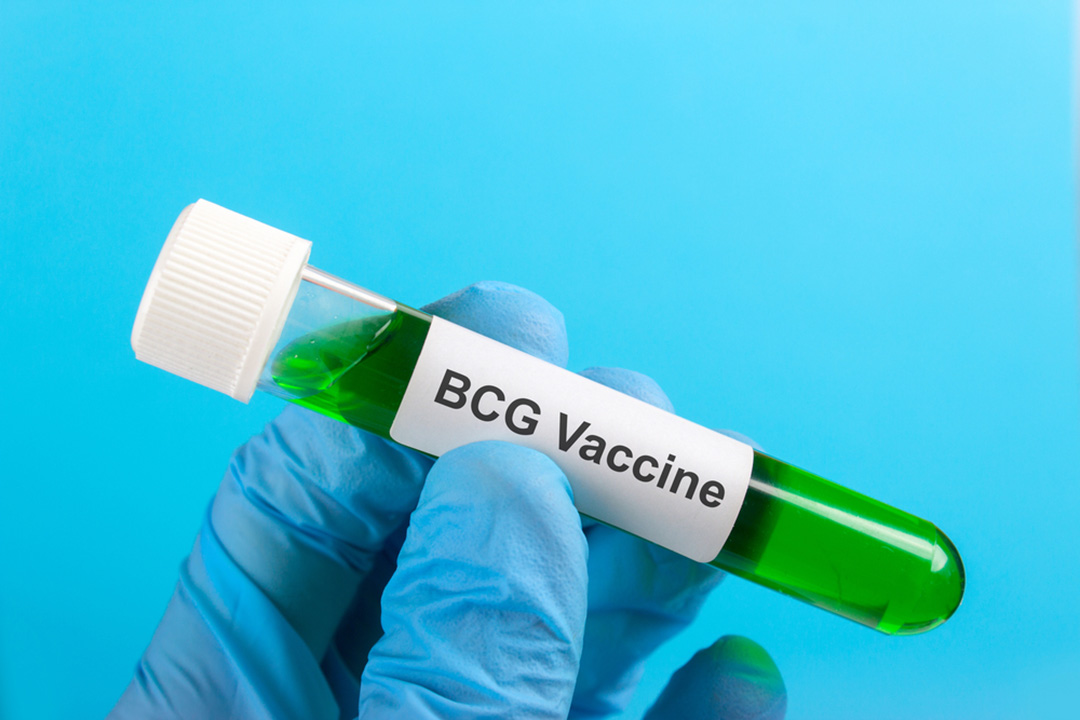




The BCG vaccine is a vaccine used in humans to prevent tuberculosis (caused by Mycobacterium. tuberculosis). The BCG abbreviation is derived from French and stands for Bacille de Calmette et Guérin (Bacteria of Calmette and Guérin) who developed this vaccine at the Pasteur Institute. In reality is an attenuated strain of tubercle bacilli that infect cattle.
Currently, in Japan, it is compulsory for all citizens to be vaccinated with the BCG vaccine. According to biological formulation standards from the Japanese Pharmacopoeia, the BCG vaccine concentration given at any one time is 12 mg live bacterium. Evidence suggests that the BCG vaccination reduces tuberculosis by 52%–74% (Ministry of Health, Labor, and Welfare website) (*1) and is effective in preventing the condition for 10–15 years. Depending on the country, different BCG strains are used for vaccination; in Japan, the Tokyo 172 BCG strain is used.

The underlying BCG mechanism in preventing tuberculosis has not been completely elucidated, but administered BCG is phagocytosed by macrophages and/or dendritic cells, followed by partial antigenic presentation and culminating in acquired M. tuberculosis-specific acquired immunity. Thus, antibodies against M. tuberculosis are produced in the body (strictly speaking, after that, a state in which antibodies against M. tuberculosis are rapidly produced is established).
As well as its role in combating tuberculosis, BCG is also used as an anticancer drug. According to information from the Shikoku Cancer Center website (*2) "Bladder cancer does not generate elevated lesions and cannot be completely endoscopically resected. Thus, in recent years, the entire bladder had to be removed. But now, injecting BCG into the bladder is the first choice of medical treatment. It is believed that BCG intravesical instillation therapy for such carcinomas eliminates cancer in 80%–90% of patients.
So why does BCG, a tuberculosis prophylaxis, exert anticancer effects? Unfortunately, the molecular mechanism has not yet been resolved. However, attention has been focused on innate immune activation effects by the vaccine. Professor Masayuki Miyasaka, an emeritus professor at Osaka University, who is a leading immunology expert said, "We know that BCG is the strongest stimulator of the innate immunity (among clinically available drugs).” Therefore, it is conceivable that activation of the innate immunity is involved in the anticancer effects mediated by BCG.
As described elsewhere (https://www.macrophi.co.jp/english/lps/4-4.html), innate immunity requires a “trained” state and this “trained immunity” state is maintained (remembered). In a 2012 study, it was reported that BCG induced epigenetic changes (changes in higher-order structures rather than gene sequences) in monocytes, increasing their ability to train innate immunity (*3).

It is not yet fully understood which component of the BCG vaccine induces trained immunity, but the BCG-cell wall skeleton contains micolic acid, arabinogalactan, and peptidoglycan, etc., which have been shown to activate innate immune cells via the toll-like receptors, TLR2 and/or TLR4 (*4).
Interestingly, TLR4 is a receptor for lipopolysaccharide (LPS). BCG, on its cell membrane, expresses a structurally similar molecule to LPS; thus, this molecule activates innate immunity by binding to the same receptor as LPS. Hence, it is believed that BCG and LPS may have a common function; indeed, LPS was previously referred to as Coley's vaccine, and has been used to treat cancer.
If the BCG strain of Tokyo 172 induces trained immunity and works to reduce the risk of seriousness such as coronavirus incidence and mortality, LPS may also exert the same effects as BCG and may be effective against COIVD-19. Unlike vaccine injection, LPS oral administration has no side effects and may be considered a perfect immunomodulator for coronavirus prophylaxis.
(*1)https://www.mhlw.go.jp/stf/seisakunitsuite/bunya/kenkou_iryou/kenkou/kekkaku-kansenshou03/index.html
(*2)https://shikoku-cc.hosp.go.jp/hospital/learn/results22/boukou/treatment04/
(*1)Bacille Calmette-Guérin induces NOD2-dependent nonspecific protection from reinfection via epigenetic reprogramming of monocytes. PNAS 109 (43) 17537-17542 (2012)
(*2)Maturation of Human Dendritic Cells by Cell Wall Skeleton of Mycobacterium bovis Bacillus Calmette-Guérin: Involvement of Toll-Like Receptors. Infect. Immun.,68: 6883-6890 (2000)

DynaxT bldg. 2F, 2217-6
Hayashi-cho, Takamatsu-shi,
Kagawa-ken,
761-0301 Japan
TEL : +81-87-867-7712
FAX : +81-87-867-7737
Your personal information on this site is protected by SSL.